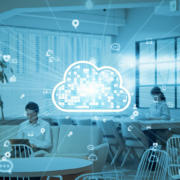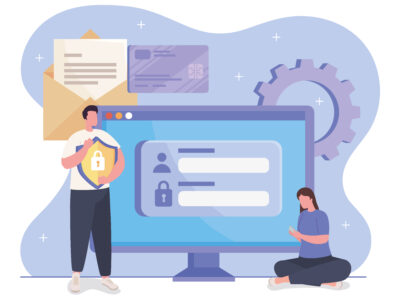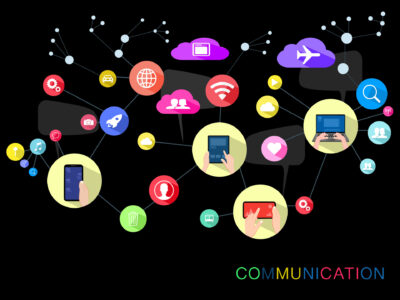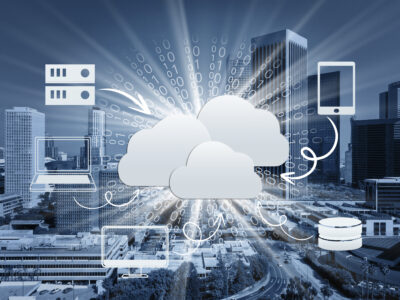Table of Contents
DRaaS Overview
Disaster Recovery as a Service (DRaaS) has become a cornerstone of modern IT strategies, ensuring business continuity amidst increasingly frequent and sophisticated threats. As organizations worldwide grapple with ransomware, natural disasters, and system failures, DRaaS provides a robust and scalable solution for mitigating downtime and data loss.
What is Disaster Recovery as a Service?
Disaster Recovery as a Service (DRaaS) is a cloud-based solution that ensures seamless business continuity by replicating and hosting physical or virtual servers, enabling rapid failover during disasters. Unlike traditional on-premises disaster recovery strategies, DRaaS leverages the scalability, flexibility, and cost-efficiency of the cloud, operating on a pay-as-you-go model. This approach supports businesses in achieving minimal Recovery Time Objectives (RTOs) and Recovery Point Objectives (RPOs), effectively reducing downtime and operational disruptions.
According to The Business Research Company, the global DRaaS market is set to expand significantly, from USD 9.6 billion in 2023 to USD 33.48 billion by 2028, at an impressive CAGR of 28.6%. Factors driving this growth include rising data reliance, increasing IT complexity, and the growing need for protection against cyber threats like ransomware. The integration of advanced technologies such as AI, machine learning, and continuous data protection (CDP) further enhances DRaaS offerings, allowing real-time recovery and ensuring resilience against natural disasters. As organizations adopt hybrid and multi-cloud strategies to optimize their disaster recovery plans, North America continues to lead the market, with the Asia-Pacific region emerging as the fastest-growing segment. This evolving market underscores the importance of DRaaS as a critical business solution, providing unparalleled flexibility, robust data protection, and operational continuity.
Technical Understanding of DRaaS
DRaaS solutions are built on a robust technical framework designed to minimize downtime and data loss, ensuring seamless business continuity. Key components include:
Replication
- Continuous, real-time mirroring of critical systems and data from the primary site to the cloud or secondary site.
- Supports various replication methods, including synchronous replication for zero data loss and asynchronous replication for cost-efficiency.
- Compatible with diverse IT environments, encompassing physical servers, virtual machines (e.g., VMware, Hyper-V), and hybrid systems.
- Integration with advanced technologies like deduplication and compression reduces storage requirements and optimizes bandwidth usage.
Failover
- Automatic redirection of operations to a pre-configured secondary environment in the event of an outage, ensuring uninterrupted business processes.
- Supports application-level failover for mission-critical systems and full-site failover for extensive disruptions.
- Uses orchestrated recovery processes to minimize manual intervention and reduce Recovery Time Objectives (RTOs).
- Dynamic load balancing and resource allocation in the failover environment maintain performance during peak disaster periods.
Failback
- Smooth transition of restored systems, applications, and data back to the primary site once it is operational.
- Incremental synchronization ensures only changes made during the failover period are transferred, reducing recovery times and resource consumption.
- Comprehensive testing and validation processes verify system integrity and operational readiness before the failback.
- Offers flexibility to choose between phased or complete failback, based on business needs and operational priorities.
Advanced Features of DRaaS Technical Architecture
1. Multi-Tiered Recovery Levels
- Allows prioritization of critical workloads, ensuring essential services are restored first.
- Provides customizable recovery tiers, aligning recovery efforts with business priorities.
2. Granular Recovery Point Objectives (RPOs)
- Configurable RPOs match varying business needs, ranging from seconds to hours.
- Supports dynamic adjustment of RPOs for critical and non-critical applications.
3. Hybrid Cloud Integration
- Seamlessly integrates with hybrid IT infrastructures, enabling recovery across private clouds, public clouds, and on-premises systems.
- Offers cloud-to-cloud recovery capabilities for businesses utilizing multi-cloud strategies, ensuring redundancy.
4. Non-Disruptive Testing
- Enables routine disaster recovery testing without impacting live systems or workflows.
- Provides detailed performance and compliance reports, helping refine recovery strategies.
5. Orchestration and Automation
- Automates recovery workflows with built-in orchestration tools to reduce human error.
- Ensures recovery tasks are executed in the correct sequence using advanced scripting policies.
6. Scalability and Elasticity
- Scales resources on-demand, accommodating business growth or temporary surges without additional capital investment.
- Supports dynamic scaling to ensure uninterrupted operations during disasters or peak demand.
7. End-to-End Encryption and Security
- Encrypts data both in transit and at rest, ensuring robust protection against unauthorized access.
- Regularly updates security protocols to combat evolving cyber threats and maintain compliance.
8. Global Accessibility
- Enables IT teams to manage and access recovery environments remotely, critical for businesses with distributed workforces.
- Ensures real-time availability of recovery resources regardless of geographical constraints.
By combining these technical elements, DRaaS delivers a comprehensive disaster recovery solution, aligning with diverse business continuity needs while minimizing operational complexity.
The Growing Need for DRaaS in Modern Enterprises
1. Economic and Operational Impact
- Downtime costs the top 2,000 companies an estimated USD 400 billion annually, demonstrating the devastating financial risks of unpreparedness.
- High-profile examples like Meta’s 2024 outage, which cost nearly USD 100 million in revenue, and Amazon’s estimated USD 34 million loss from a single hour of downtime, highlight the stakes for modern enterprises.
- The global DRaaS market is projected to grow to USD 33.48 billion by 2028, with a CAGR of 28.6%, driven by increasing awareness of disaster recovery’s critical role in business continuity.
2. Threat Landscape
- Cyberattacks, particularly ransomware, have surged significantly in recent years. The number of claimed ransomware attacks worldwide increased by 74% in 2023 compared to 2022.
- Natural catastrophes such as floods, wildfires, and severe storms disrupt critical infrastructure like energy grids, water systems, and transportation networks, leading to extensive economic losses. For instance, the 2021 Texas winter storm caused power outages and infrastructure failures that halted business operations, resulting in over USD 200 billion in economic losses.
- Hardware failures, human errors, and power outages remain consistent threats, underlining the necessity for comprehensive disaster recovery strategies.
3. Regulatory and Compliance Drivers
- Industries such as healthcare, finance, and retail face stringent mandates like GDPR, HIPAA, and PCI DSS.
- DRaaS simplifies adherence through features like automated audits, secure encryption, and unified data governance, reducing compliance risks.
- Non-compliance penalties, including heavy fines and reputational damage, further incentivize the adoption of DRaaS solutions.
4. Technological Advantages
- Scalability: DRaaS leverages cloud infrastructure to provide flexible, on-demand scalability without requiring significant upfront investment.
- Automation: Near-instant failover capabilities and automated testing reduce manual effort and downtime.
- Integration: Seamless integration with hybrid cloud environments ensures business continuity across diverse IT infrastructures.
5. Business Continuity Metrics
- Organizations leveraging advanced disaster recovery solutions have reported significant improvements in recovery times. For instance, solutions like Azure Site Recovery (ASR) have been shown to decrease data recovery time by up to 80%, allowing critical services to resume within minutes after an outage.
- For over 90% of mid-size and large enterprises, the cost of a single hour of downtime now surpasses USD 300,000 on average.
- Recovery Time Objectives (RTO) and Recovery Point Objectives (RPO) as low as a few minutes ensure continuity for mission-critical operations.
6. Cost Efficiency
- DRaaS eliminates the need for substantial upfront investments in hardware and infrastructure. Instead, organizations pay for resources as they use them, making disaster recovery more accessible and cost-effective.
- By adopting DRaaS, companies can shift from capital expenditures (CapEx) to operational expenditures (OpEx). This transition aligns with modern financial strategies, offering predictable and scalable cost structures.
- Outsourcing disaster recovery to DRaaS providers can lead to significant annual savings, as organizations no longer bear the costs of underutilized assets and ongoing maintenance.
7. Enhanced Security
- DRaaS providers utilize end-to-end encryption and advanced cybersecurity protocols to prevent breaches. For instance, AirGapd™ by Airiam employs AES 256-bit encryption for data at rest and TLS 1.2 for data in transit, ensuring comprehensive data protection.
- DRaaS solutions operate by replicating and hosting critical data and applications in a secure cloud environment. This continuous replication allows organizations to access a recovery site where they can restore their systems and resume normal operations, ensuring protection against evolving threats.
- Adherence to industry standards such as ISO 27001 is crucial for DRaaS providers. For example, OTAVA’s cloud compliance and security practices are ingrained in their operations, with certifications including ISO 27001, demonstrating a commitment to established best practices in data handling.
8. Future-Ready Strategies
- AI-driven disaster recovery solutions, including predictive failure detection, optimize performance and minimize risks.
- DRaaS extends protection to endpoint devices, addressing the growing reliance on remote work environments.
- Hybrid recovery models combining public and private clouds balance compliance requirements with operational flexibility.
By addressing the multifaceted risks of modern IT environments, DRaaS has emerged as an indispensable solution for enterprises aiming to maintain seamless operations, safeguard critical assets, and thrive in an unpredictable world.
Essential Capabilities of a Modern DRaaS Solution
Scalable Infrastructure
- Supports multi-cloud and hybrid cloud architectures, enabling seamless integration with AWS, Azure, or Google Cloud.
- Elastic scaling ensures resources match workload demands during disasters.
Automation and Orchestration
- AI-driven failover processes reduce human intervention.
- Automated recovery testing ensures readiness without disrupting operations.
Real-Time Monitoring and Analytics
- Predictive analytics identify vulnerabilities, enhancing preemptive defenses.
- Comprehensive dashboards provide visibility into RTO/RPO compliance.
Immutable Backups
- Employs write-once-read-many (WORM) storage to prevent ransomware tampering.
- Guarantees data integrity even under sophisticated attack vectors.
Edge Integration
- Supports edge computing environments, crucial for IoT-heavy industries like manufacturing and logistics.
- Facilitates rapid recovery in decentralized operations.
The Path Forward for DRaaS: Opportunities and Challenges
As Disaster Recovery as a Service (DRaaS) continues to evolve, it presents both transformative opportunities and critical challenges that organizations must navigate to ensure seamless adoption and efficacy.
Future Opportunities with DRaaS
1. Integration with AI and Machine Learning: AI-powered DRaaS solutions are revolutionizing disaster recovery by enabling systems to autonomously detect anomalies, predict potential failures, and trigger preemptive failovers. By 2030, AI integration is projected to boost disaster recovery efficiency by significant ratios.
2. Edge and 5G Synergy: With the rise of edge computing and the rapid adoption of 5G networks, DRaaS is poised to safeguard latency-sensitive applications like autonomous vehicles and telemedicine, ensuring real-time continuity even at the network’s edge.
3. Quantum-Safe Solutions: As quantum computing advances, DRaaS providers are proactively incorporating quantum-safe encryption algorithms to counteract emerging cyber threats, bolstering future-proof security measures.
4. Sustainability and Green IT: By shifting to cloud-based disaster recovery, organizations can significantly reduce the environmental impact of maintaining physical DR sites. Green cloud strategies could enable a significant reduction in carbon footprints over the next decade.
Solving the Top Three Hurdles in DRaaS Adoption
1. Bandwidth Constraints: Limited network capacity can impede the replication of large datasets. To address this, organizations are adopting optimized WAN acceleration and data deduplication techniques, ensuring efficient data transfer.
2. Compliance Complexities: Operating in multi-cloud environments across varying global regulations demands robust compliance strategies. Providers offering built-in compliance modules simplify this process, reducing the risk of regulatory breaches.
3. Cost Management: While DRaaS is cost-effective compared to traditional DR methods, unexpected expenses from frequent failovers or data migrations can arise. Transparent Service Level Agreements (SLAs) and detailed cost analyses are essential for managing and predicting costs effectively.
While challenges persist, proactive strategies and innovations like AI integration, edge computing support, and quantum-safe solutions ensure that DRaaS remains a cornerstone of modern business resilience. By leveraging these opportunities and mitigating challenges, organizations can unlock the full potential of disaster recovery software to safeguard their operations in an increasingly unpredictable world. DRaaS not only ensures operational continuity but also empowers organizations to stay agile in an increasingly volatile environment. By embracing this robust solution, businesses can turn potential disasters into opportunities for demonstrating resilience and commitment to stakeholders.



















Anyone associated with the Global GCCs operating out of India can relate to this. There should be some way such informative articles should reach the leadership teams across GCCs.
This article brilliantly highlights the critical role DRaaS plays in this volatile IT age. Advanced features like AI-driven anomaly detection and quantum-safe encryption demonstrate the forward-thinking evolution of disaster recovery solutions.